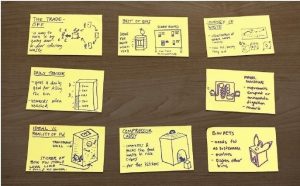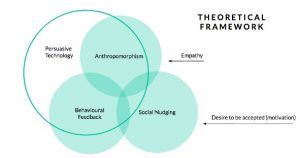
International trends such as the pressure to rationalise public spending, growing expectation of an expanding connected population, demographic shifts, and globalised competition have transformed the operating environment of public sector services, creating new and complex challenges. These challenges cannot be met with technology alone; we need to unleash the latest weapon in delivering better services—the power of the people.
Local governments must devise new ways of interacting with its people who, in turn, demand greater inclusion and participation, as well as greater accountability from the local government for the quality of the public services that it delivers. The massive increase in the use of smart personal devices and communication technologies, including social networks has reinforced this trend.
Traditionally, citizens participate little in the design of public services. Public administrations tend to employ or rely on service experts to design reliable services. In the best of cases, citizens participate in the pilot studies of new services. In this phase, the ability to introduce relevant design changes may be limited without incurring cost delays or deviations. The question is more ‘did the new service work?’ rather than ‘is it the best new service design to fit in with the community?’
We have recently found in Londoners’ Lab that early engagement in a multi-stakeholder approach can deliver better designs, leading to better outcomes.
Recent studies by the OECD (Organisation for Economic Co-operation and Development) show that the experience of citizens in accessing public services is a key factor in trusting local governments. This has led many councils to consider strengthening the capacity to deliver their services, adopting innovative and increasingly citizen-centred approaches.

Many of these approaches deal with urban services because it is especially within cities that the growth of the service sector is evident. Cities are places where it is necessary to provide and benefit from services; where mature economies have rapidly shifted from manufacturing to service-based economies (Kim & Short, 2008). In short, whilst not everyone lives in a city, cities are where the main challenges and opportunities collide.
Even so, herein lies the difficulty: most local authorities do not know, are not accustomed, or wish to take the perceived risk to develop services with a new philosophy of collaborative design, in which citizens participate in all phases of development. Citizens are considered subjective and inexpert and are only consulted when the proposed new service is complete.
Additionally, how would a co-created service be articulated in contract specifications? How would scope evolution be managed over time?
Public–private collaboration does not the lack innovation potential or the willingness to change, but the inflexible contractual relationship between council and urban service provider tends to be the barrier. Urban service provision, funded by tax payers, tends not to take risks in innovation because of the fear of failure. Perhaps the greatest failure is not to update and adapt services in the light of the pace of change we see around us.
Many speak of the importance of the development of public services centred on the user, but almost nobody explains how it is done in a way that is viable, economically reasonable, and sustainable in the context of the public sector. Why don’t we ask people to help in the design of public services when our opinions and comments are constantly sought?
In this context, the Ferrovial Services Centre of Excellence for Cities and partners (Greater London Authority, University College London and Future Cities Catapult) designed Londoners’ Lab project which aimed to pursue gaps in the co-designing of public services and to let innovation flourish for social good. The programme led to a substantial increase in recycling performance in a context that industry experts regarded as the ‘worst case scenario.’
The goal of the urban service co-design phase was to get resident and stakeholder feedback on potential ideas as well as to conceptualise and create a new service intervention that would meet the identified needs and requirements with the outcome to improve participation in food waste recycling. This phase consisted of several ideation and feedback sessions that enabled us to create and iterate our ideas.
The engagement with citizens revealed that one of the main barriers to recycling food waste was that the service was not ‘easy to use’; in other words, it was much easier not to do it, with neither punishment nor reward to change the behaviour. In the communities we worked with, the residents felt that the food waste bins were placed too far away and took too much effort to take the bags to. The ideas suggested by the participants to make recycling more convenient were not always practical to implement, but other possibilities for making food-waste recycling simpler, clearer, and more worthwhile were proposed as potential innovations.

During the design phase, we soon realised that a strictly targeted approach might not be enough to create new behaviours among residents. Therefore, a holistic approach (see theoretical framework), combining multiple strategies and interventions, was considered relevant for making an impact on the residents’ behaviour. It is impractical to design a solution specific to each location where the goal must be to share across every location.

The Londoners’ Lab project has been a unique opportunity to unite our strengths with several industry and governmental partners towards creating a pilot to advance sustainable behaviours in a real-world setting. During our journey, we learned many lessons about cooperation in a complex setting of stakeholders: how to manage expectations, adjust our research, navigate through different organisational structures, and make compromises for the best of everyone. We consider these to be important lessons that could not be gained by maintaining our standard approach to daily urban service operations.
Citizen engagement is difficult because of the massive role that the community plays. We must be flexible and acknowledge that we cannot always get the results we planned for. Becoming aware that the community is unwilling or unable to engage can be difficult. When an ‘ideal’ community is found, progress is simpler, but this does not mean that the path forward will be without challenges. Citizen engagement is conducted in pursuit of a goal, and the quirks of the community context may affect how it is carried out.

Every day we face situations where innovation could be used to improve public services. However, there are two fundamental things that limit a city’s capacity to innovate in the everyday world:
- One: Not writing ‘recipes’ or learnings and not focusing on systematisation of innovation. Systematising innovation means being able to repeat it more times and that is why it will always lead to greater achievements.
- Two: Avoid words that limit us. For example, “FAILURE”. Doing something wrong or making a mistake is not failure; failure is the same error repeated multiple times. Errors may be necessary to stimulate the exploration of new paths.
‘Harnessing the power’ of the citizen is an opportunity for all of us in both public and private sectors. We have documented our approach in Londoners’ Lab and we would love to hear of your experiences. Sometimes you have to overcome adversity to achieve a better outcome!





There are no comments yet